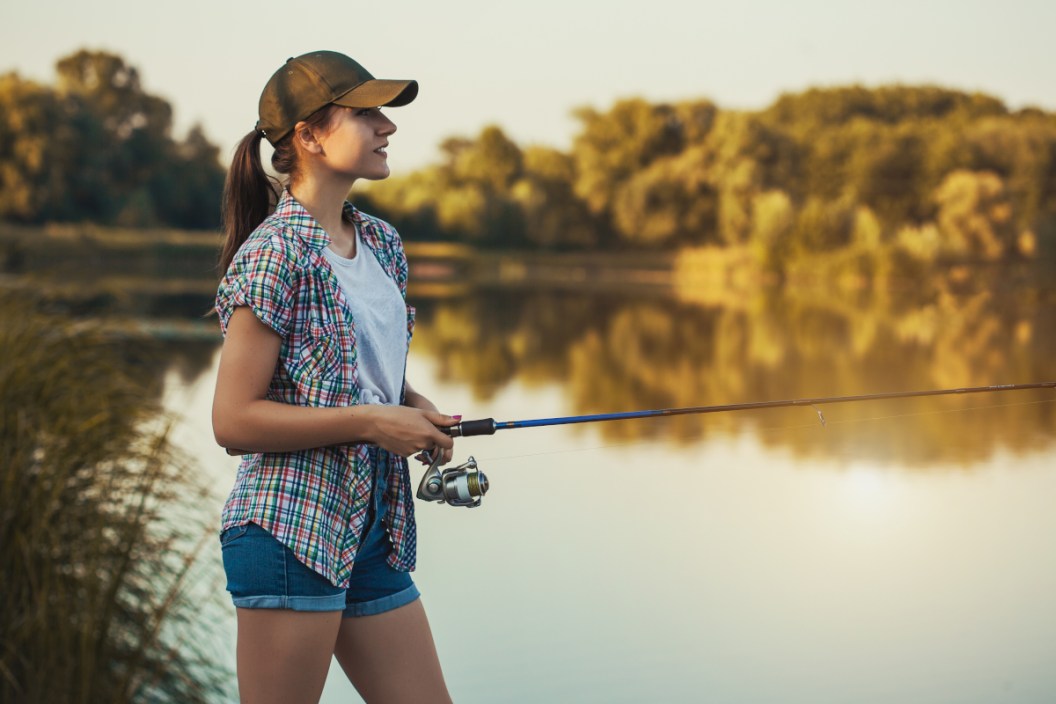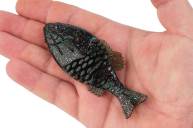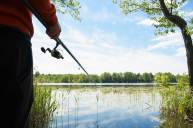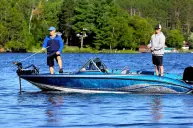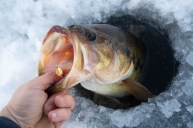Here are a few things to remember when your favorite lake or stream is letting you down.
You finally got some time to yourself, got down to your favorite fishing hole, but haven't caught much since you got there. It may not be the body of water that you're fishing, but the way that you're going about it.
There are always things that can go wrong during a day on the water that can have us scratching our heads and mumbling to ourselves. But when we've got the ability to visit the same quality lake or river repeatedly, and can watch the seasonal and conditional changes throughout the course, there are things we can do, and avoid doing, that will set ourselves up for more production.
The last thing we want to think about when we go fishing are the negative things, but sometimes it's the negative things that can be controlled when the fish cannot. In those instances it can be a simple matter of stepping back from the plate, kicking the dirt off of your spikes, and getting back in the batter's box with a refreshed perspective.
Baseball analogies aside, let's conduct a little examination of the mistakes that can effect our angling understanding of the one body of water we're trying to succeed at.
1. Water Clarity Mistakes
We can easily break it down to two options here, clear water and stained water, although fish can be caught in the dark and sometimes muddy conditions as well. For clear water, you want to use a subtle colored, more translucent lure since a fish's field of vision is greatly expanded.
Not only that, but the action and movement that makes a lure stand out more can be just as important when it comes to a fish's desire to ultimately strike. Simply put, natural colors work well in the clear water, as well as green, gray, silver, and white. The pros tend to agree that the lure selection and action is the most important factor, but color definitely comes into play as a part of the entire presentation.
As far as stained water goes, less naturally defined colors get the nod such as chartreuse, pink, or orange. Not only those, but blue and purple are classics. If you ask me, straight black is one of my all-time favorites for such conditions.
This is not to say that you cannot or will not catch fish with a particular color pattern that is more specific to one or the other versions of water clarity, just that not paying attention to these facts can lead to less than satisfactory amount of success. While you're paying attention to your location, the water temperature, and the weather, don't forget to distinguish whether you're dealing with clearer water than normal, or the other way around.
2. Hook Setting Miscalculation
There's no easy way to universally tell someone how to set the hook on a bite. This can depend on line type, lure presentation (particularly with topwater baits), water depth, and even the type of hook that you are using. Strong, aggressive hook sets on bass species while using worm, jig, or offset hooks are the name of the game. But circle hooks, on the contrary, are best left to their own devices to work.
This is also a factor with braided and even fluorocarbon lines that don't have much stretch. Wild hook sets with these line types can be unnecessarily harsh and extreme.
If you're topwater bass fishing, a good hookset involves even more to consider. Most bass anglers know that if it comes out of the water, having your rod tip too high creates more opportunity for a fish to spit the lure. Since monofilament line works the best for topwater presentations there can be plenty of slack to be aware of as well.
3. Bad Casting
This is mostly about accuracy, but it has a lot to do with unintended noise and disturbance. Sure, we've all put one in the trees, a dock piling, or right onto the shore, but sometimes that can have more of a negative effect than we realize. A bait that continues to clank off of the wood or a steel pole of a dock or pier can easily spook that big boy that's relaxing underneath of it. These are the reasons why pitching and flipping is a vital tactic to "test" the waters and see what may be there before we get too close.
It's so darn easy to approach a great looking spot and ruin it. Think about the disturbance you cause when you go and retrieve your lure.
Move slower and more cautiously. Test the edges of a spot to get a feel for how it needs to be targeted. Many times you will get the desired strike before having to reach deeply into the danger zone.
4. Impatience with Artificial Lures
It happens to all of us: 10 casts with a go-to bait and no strikes means you need to change up, right? Though you're quick to think fish don't want your offering, it could be something else: retrieval speed, noise, casting accuracy, cloud cover, or some other variable. Make the presentation changes and wait out the conditions a little more than you normally do, and see if your instincts can come through.
The opposite can also be true. Sticking with your favorite lure through thick and thin can cost you other opportunities if you're not paying attention. Even the same lure in a different pattern can mean the difference between success and failure. Be a little more patient, but not too patient, when you're trying to determine what the fish are reacting to.
5. Fishing Too Fast
Bouncing off the previous tip, doing anything too quickly while trying to master a body of water is detrimental. This may be the number one mistake for anglers anywhere, especially when they are on their favorite lake. Not only that, but when you are actually fishing an area that you know quite well and have had success there, the impetus is to get eager and excited. That can cause you to forget to slow down.
Sure, some bait types and techniques require a faster retrieve or quick movements to encourage attractive action, but for the majority of lures and fishing situations, you are better off working slowly and being patient especially with soft plastics.
Slowing down also refers to your boat speed and movement. Cruising too quickly through a good strike zone, or bailing on a spot before truly discovering its effectiveness, are surefire ways to decrease your chances at success.
Doubling up on your rigged rods and using a tandem technique can really help you slow down and get the most out of your spots. Rip a spinnerbait through the target area, set it down, and then toss a soft plastic in there to see what you may have gotten the attention of down there.
Common Fishing Mistakes Can Be Avoided
The most common mistakes that anglers make involve forgetting that fishing is supposed to be enjoyable. We all take it seriously so we can use what little time we have to be successful. But hooksets and full livewells aren't always the measuring stick to go by.
We forget to focus on natural food sources, make use of the current weather situation, make the incorrect line choice, and even slack off on gear maintenance all to our misfortune.
Fishing tips are a dime a dozen, but that's because everyone believes catching fish should always be the ultimate goal. Seeking out a smallmouth bass bite, tossing topwater baits for largemouth bass, or targeting redfish in the back bays are all learning opportunities.
Don't forget how to fish with the right mindset: slow down, avoid getting too excited, and remember that figuring out why you didn't catch any fish is as valuable as actually catching them.
Looking for a little more or even hot lunch for your hunting blind? Follow my webpage, or on Facebook and YouTube.
NEXT: QUIZ: HOW MANY OF THESE 55 BASS FISHING EXPERIENCES HAVE YOU HAD?
